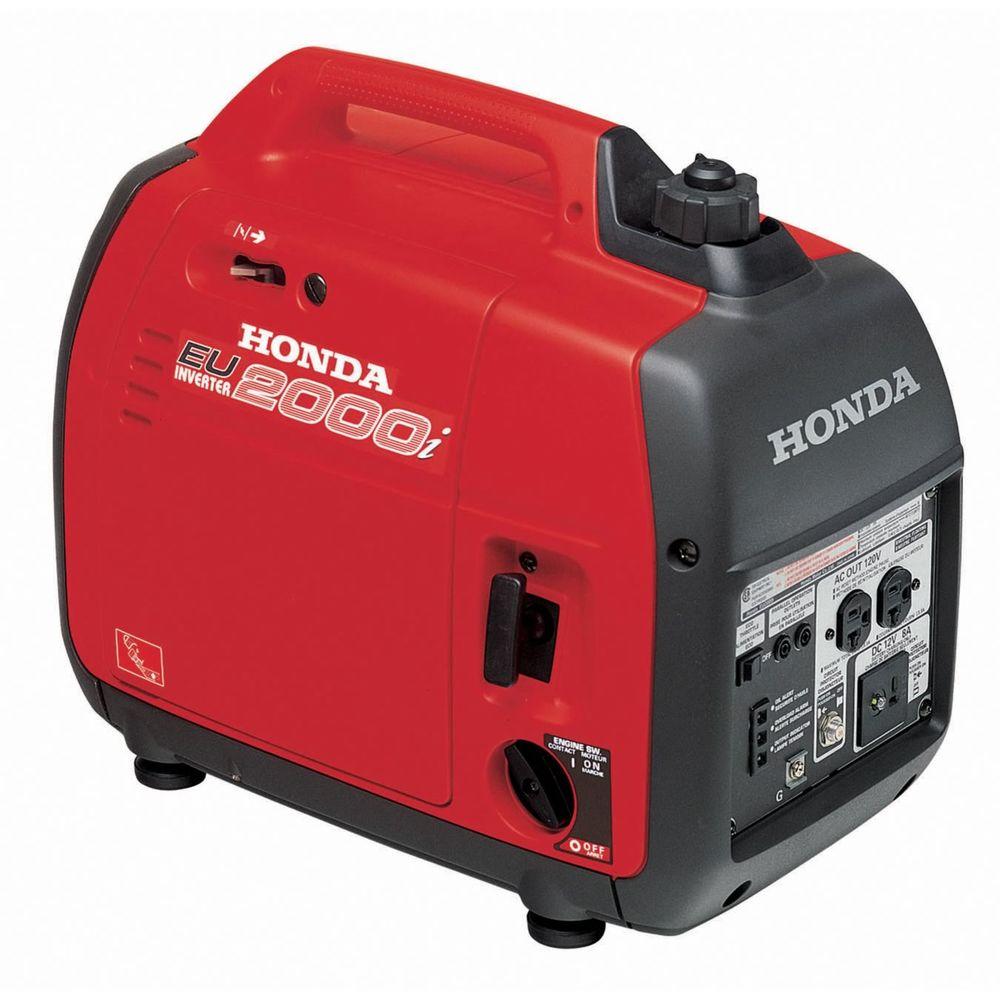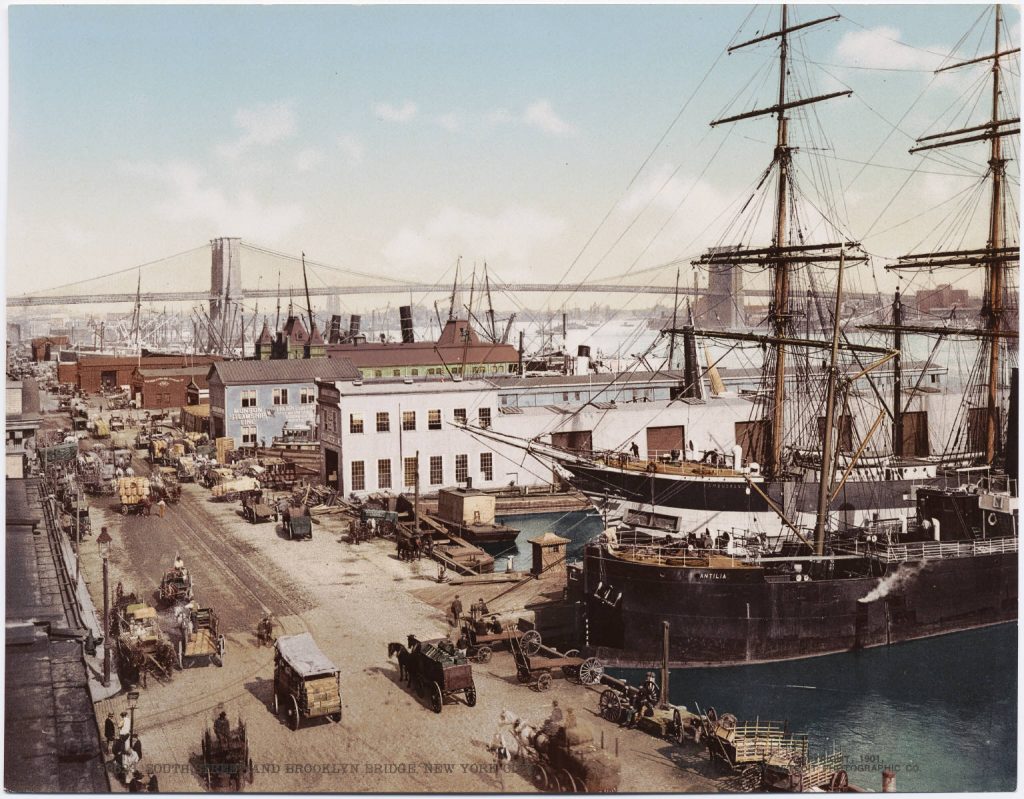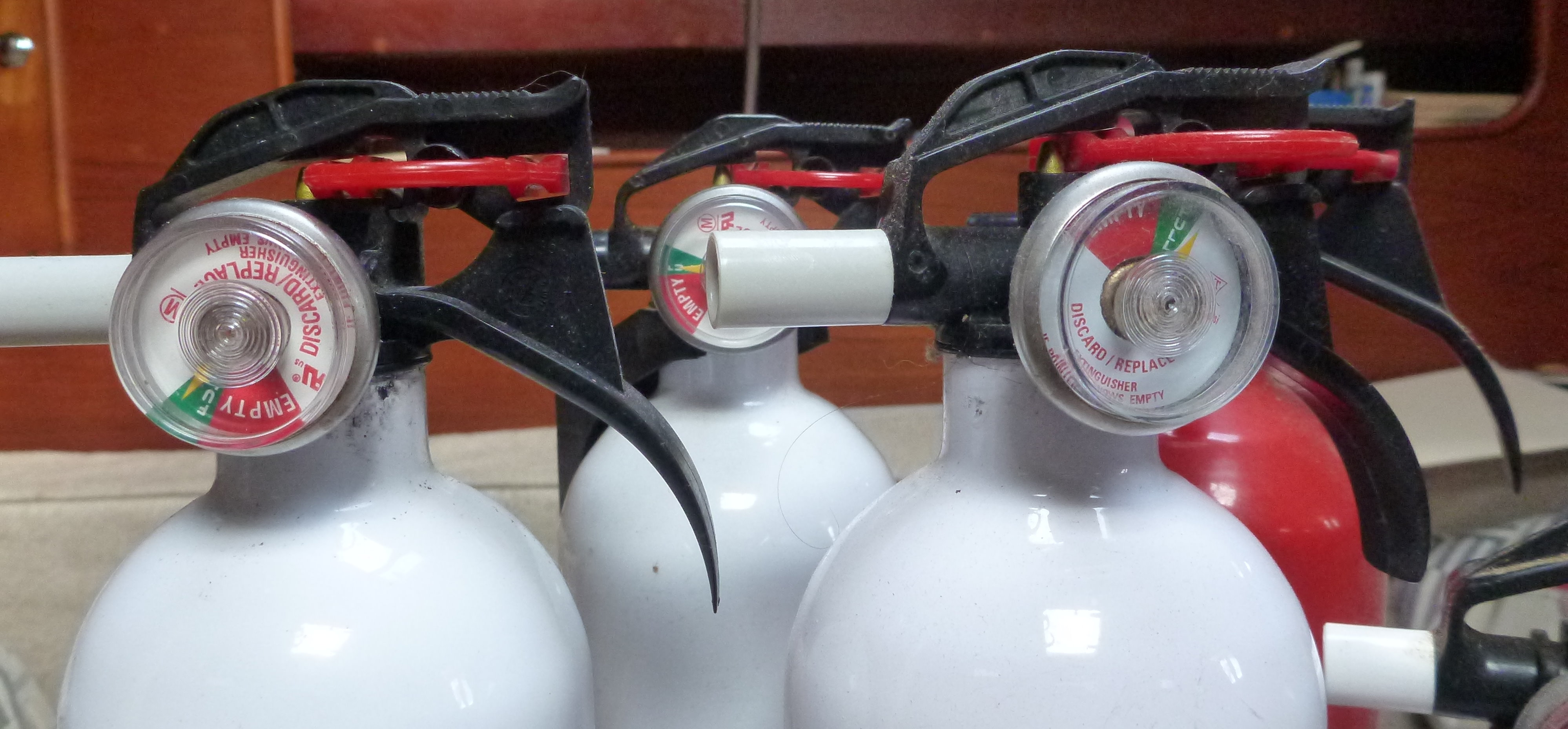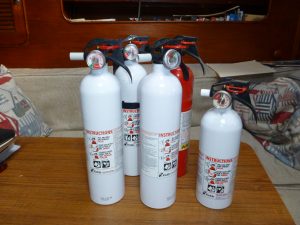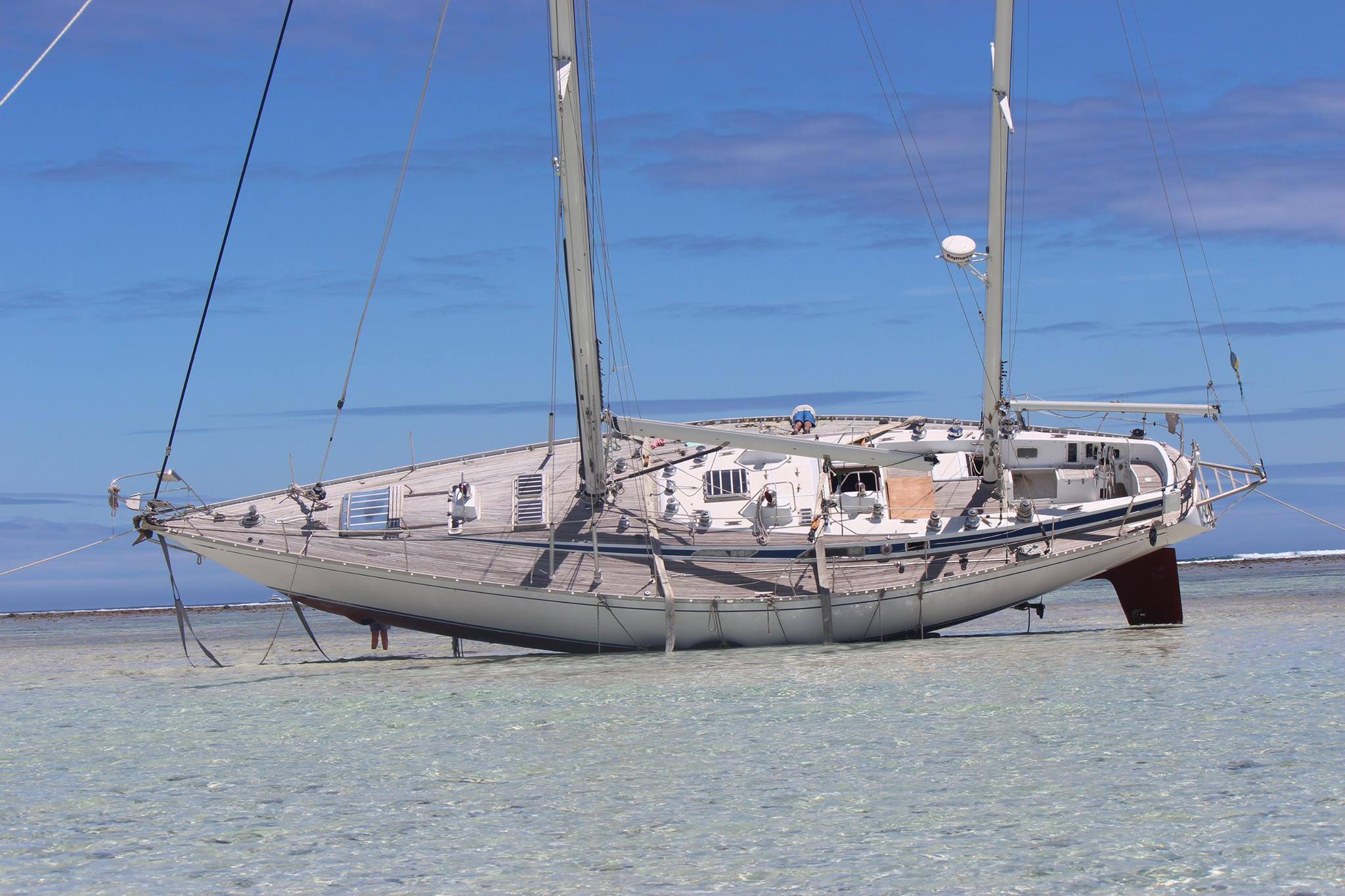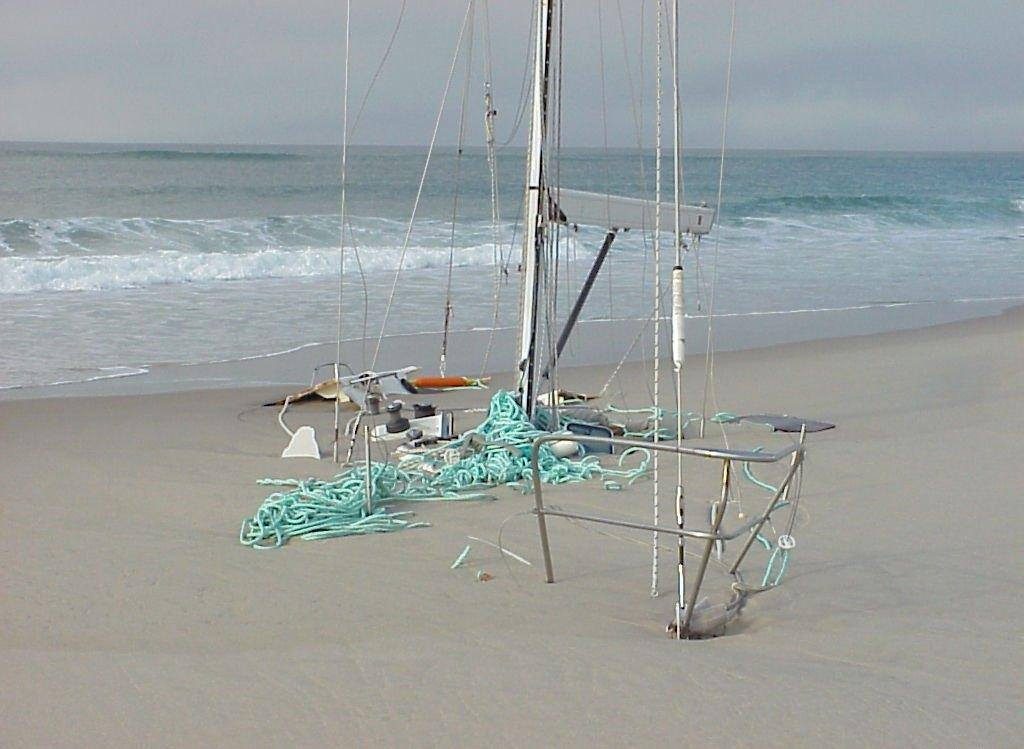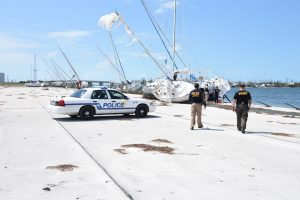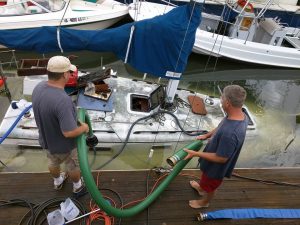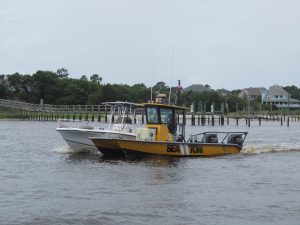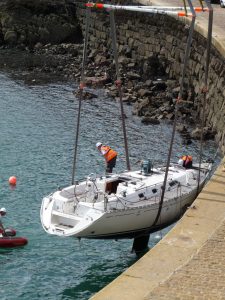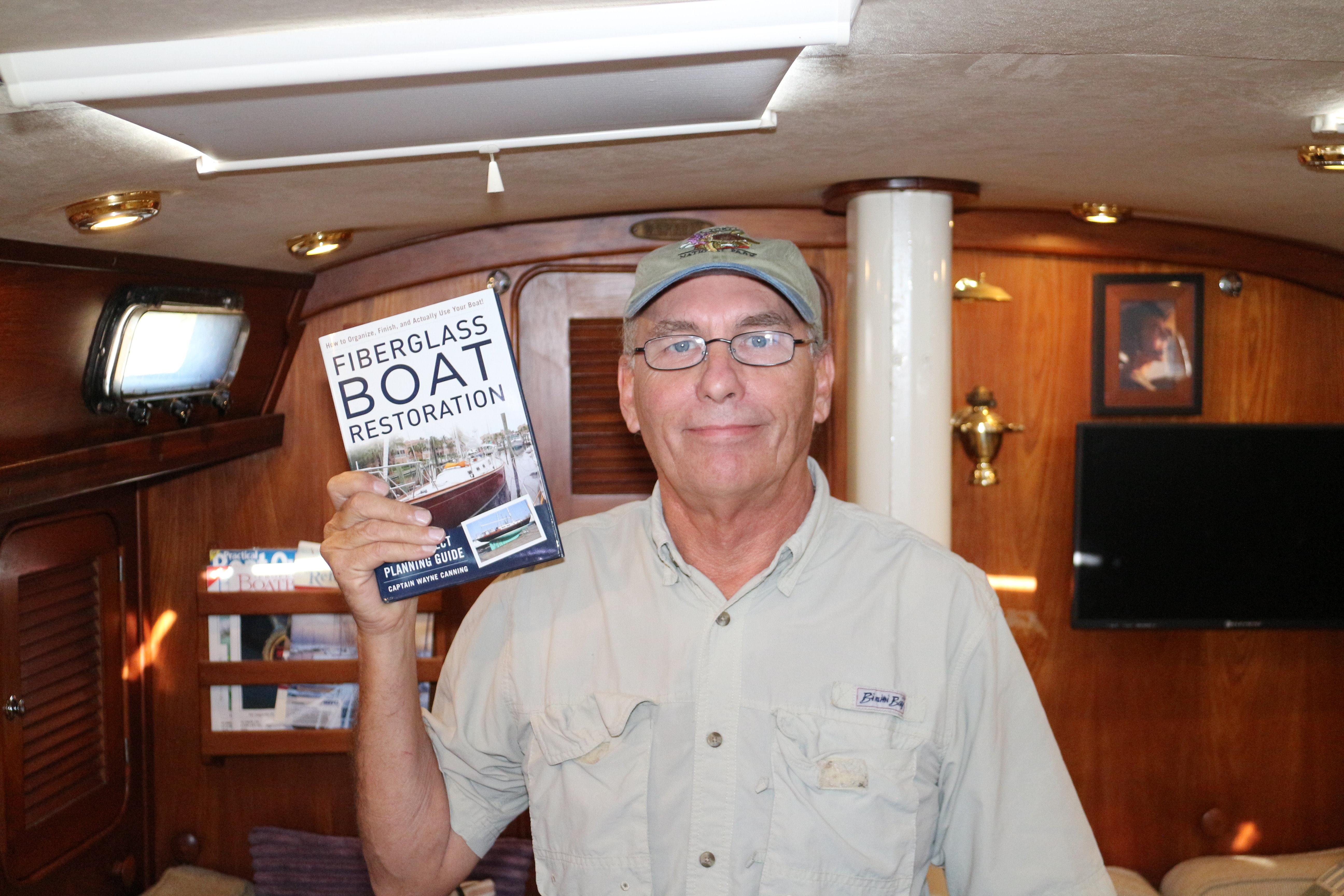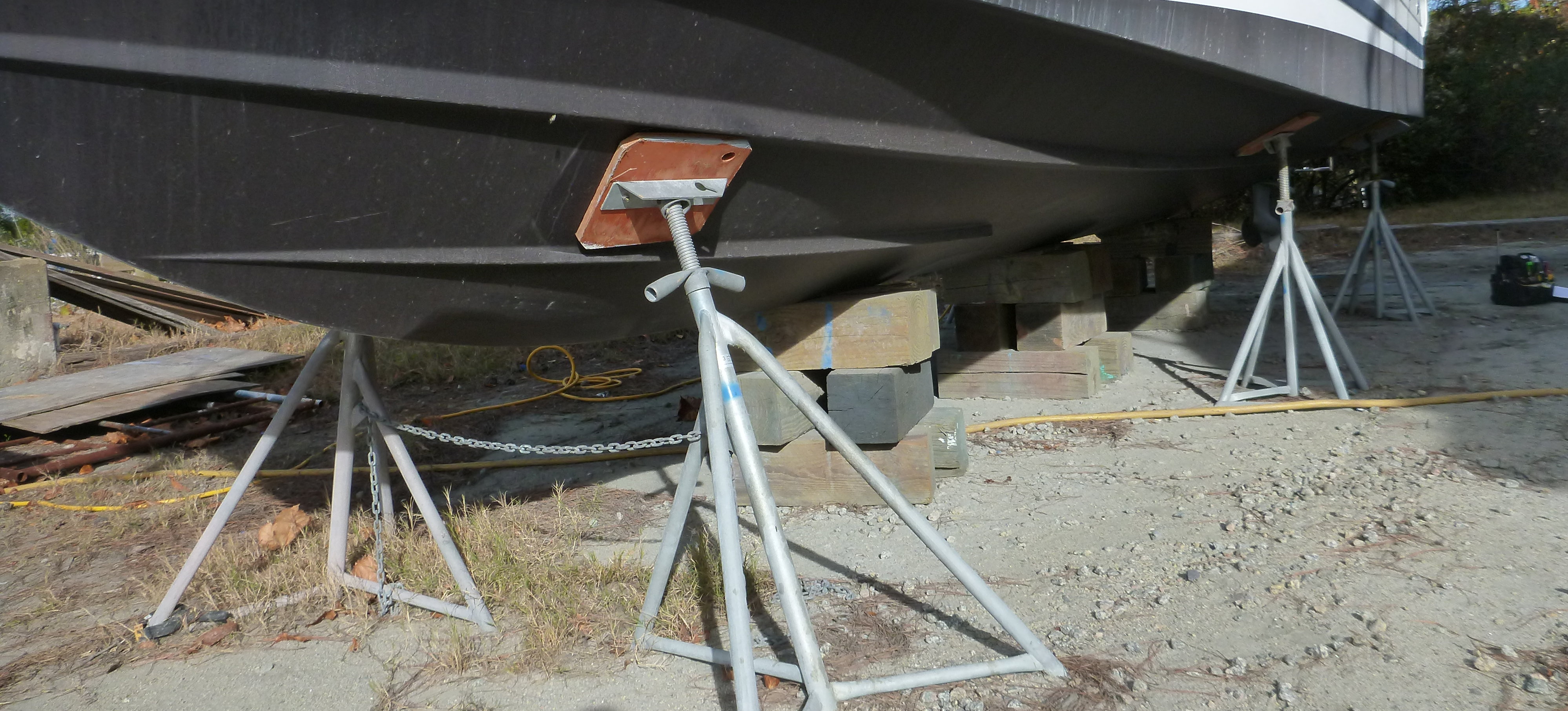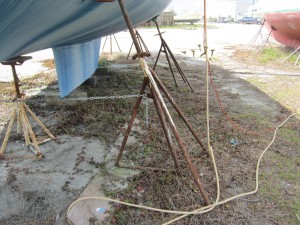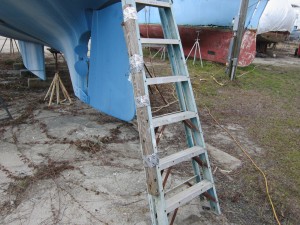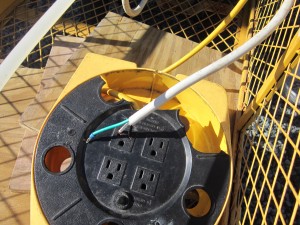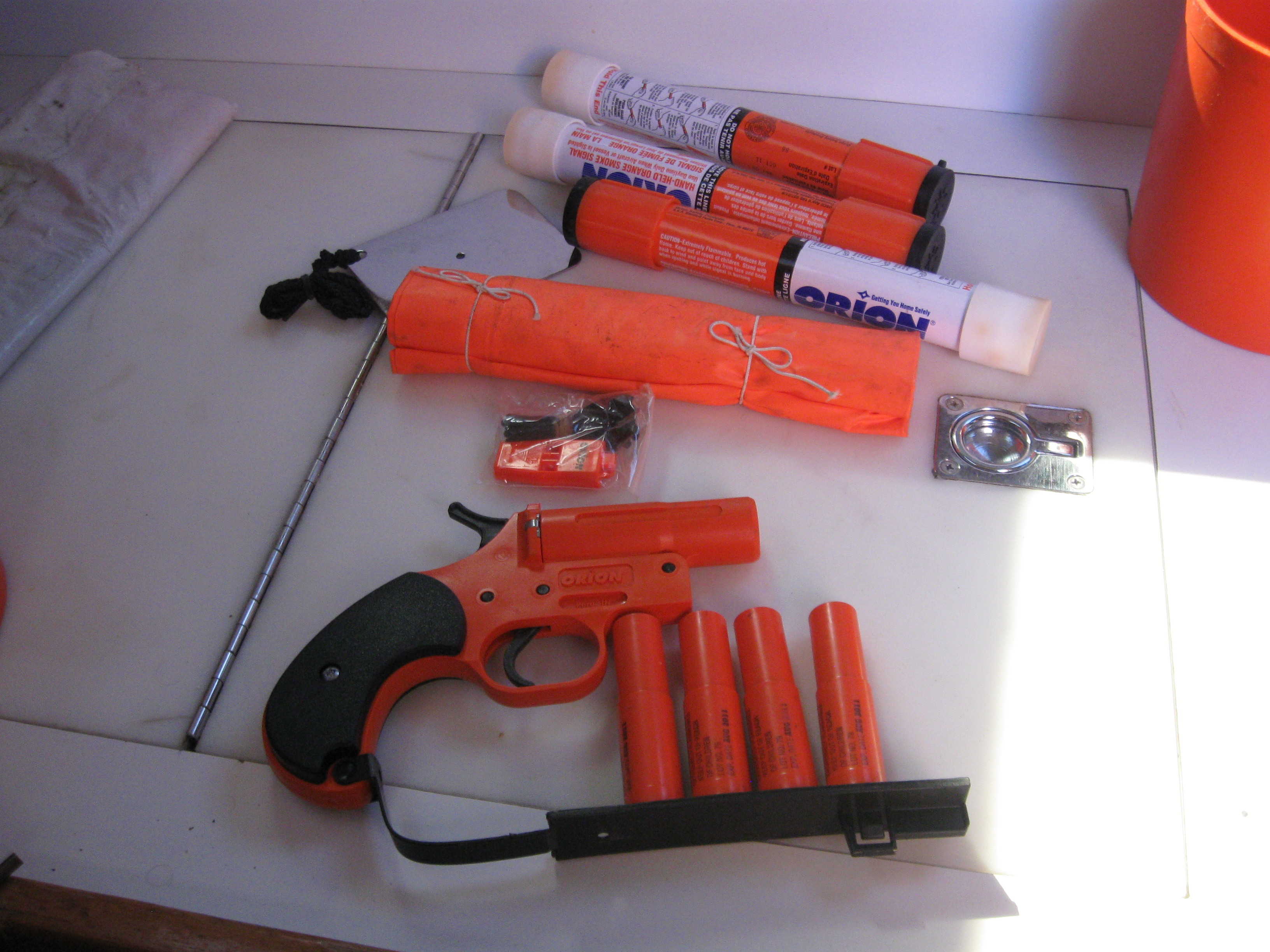Background
I have
found over the years that many of my clients do not really understand what a
marine survey is or just what a marine surveyor does. Knowing what to expect
from a good marine survey will help in selecting the right surveyor and aid in understanding
the surveyor’s findings when the inspection is complete. Not all marine
surveyors are the same and not all are as through as one would hope, so
understanding what to expect will help when it comes to selecting the right
surveyor.
Just
what is a “Marine Surveyor?” The term surveyor comes from old English meaning
to inspect or ascertain the condition of something. The term was used to
describe inspections done to ships and cargo for insurance companies when
insuring vessels for voyages. The insurance companies needed to know that the vessels
they were insuring were seaworthy and worth risking their money. Likewise, they
wanted to know that the cargo was all accounted for and that what was claimed
in the ships manifest, was indeed what was really on the ship. For this the
insurance companies would hire an independent inspector to verify cargo and
vessel condition prior to binding insurance. Knowing the risks also allowed the
insurance companies to properly price the insurance.
Modern
marine surveyors still perform this same function for commercial shipping but
now many will do a similar inspection for pleasure craft. Most surveyors will
specialize in either commercial or pleasure craft as these two disciplines are
fairly specialized. For this article I am going to focus on surveying pleasure
craft and not get into commercial surveying as it is not my area of expertise.
A
general surveyor, often referred to as a “hull surveyor” will inspect the
entire vessel along with its systems and equipment. The average boat owner may
need the services of a surveyor for either a pre-purchase or insurance survey.
For either of these they will need to hire a general or hull surveyor. There
are times, however, when an owner or buyer may want someone with a bit more
specialized expertise, as in the case of an engine or damage surveyor. Surveyors
doing these types of surveys will have particular knowledge related to their
specialty and will often just focus on those areas of specialty although some
of these specialized surveyors will also do general surveys as well.
Accreditation
A
common misunderstanding is that surveyors are licensed or certified to do this type
work. There is no license or certification required to become a marine surveyor
in the United States. Most however, will belong to a professional organization
that will help ensure they are well versed in their specialty and perform their
work in a professional manner. This voluntary system works well for the most
part but by itself does not ensure that all surveyors are fully competent. Membership
in a professional organizations will, however, help weed out the fly by night,
part time surveyors that may not act in a professional manner or have the
proper education and expertise to be qualified. Most banks and insurance
companies will only accept survey reports from a surveyor that is a member of
one of the professional organizations.
The two
primary surveyor organizations are the Society of Accredited Marine Surveyors (SAMS,)
and the National Association of Marine Surveyors (NAMS.) Both of these
organizations require a certain level of competence, knowledge, and professionalism
from their members. They also set standards for the content and information to
be provided in a survey report ensuring some constancy. Candidates for
membership first must work as an associate member for several years prior to
becoming a full member. They also must pass a general knowledge test relating
to their classification before becoming a full member. All this helps ensure
their member are serious about what they are doing and have a basic level of competence.
Additionally,
to maintain membership these organizations require their members complete a set
amount of continuing education within the marine industry. This will help
ensure that the person you are hiring is knowledgeable and works to stay
abreast of changes within the industry. These organizations also provide a
resource should anyone ever have a problem with a surveyor they have hired. Complaints
are taken seriously by the leaders of these groups and can have consequences
for any members not performing in a professional or ethical manner. Members
with more than a few complaints will be removed making it harder for them to earn
a living as a marine surveyor. Most insurance companies and lending
institutions will only accept reports from a surveyor who is a member in good
standing of one of these organizations. This is another reason it is important
to verify a surveyor’s memberships prior to hiring them.
Types of Surveys and
Surveyors
There
are several types of surveys the average boat owner is likely to encounter. The
first and most common is a pre-purchase survey. As the name implies this is an
inspection done prior to purchasing a boat. This is perhaps one of the most
comprehensive of all inspections done on a pleasure boat. It should cover not
only the hull, deck, and internal structure but also all the systems including electrical,
plumbing, fuel, and engine systems. All systems and equipment should be powered
up and tested for normal operation during a pre-purchase inspection.
The
vessel is also normally taken for a water trial to test basic engine operation
along with any equipment that can only be properly tested while underway. Items
such as autopilots, trim tabs, and stabilizers all need to be checked while
underway. With sailboats the sails are hoisted and sailing gear tested for
proper operation as well. This is also an opportunity for the buyer to get a
feel for the boat while underway. The boat is also normally taken out of the
water for an inspection of the hull below the waterline. Running gear, thru hulls, and other underwater
equipment are also inspected while the vessel is hauled. Although this adds to
the expense of the survey with additional yard fees, it is the only way to
fully evaluate the hull and running gear. I t may be possible to do an in water
inspection by diving but this is a poor substitute for being able to see the
hull out of the water.
Once
the inspections are completed the surveyor will then complete a comprehensive
report. This report will include a full description of the vessel along with
its equipment. It will also cite the general condition along with any
deficiencies found. Deficiencies are often broken down into 2 or more
categories listing safety problems first followed be general maintenance
problems. A fair market valuation will be assigned based on vessel condition
and comparisons to what similar vessels have recently sold for. All this
information will help a buyer to decide if a boat is worth purchasing. It also
will give the buyer a list of problems and deficiencies that will need to be
addressed. Should the buyer wish to proceed with buying the boat the survey
report will be needed by mortgage and insurance companies to verify the vessel
is as described.
The
next most common type of survey is an insurance survey sometimes referred to as
a Condition and Valuation survey or C&V. An insurance or condition survey
is most often conducted because an insurance carrier or finance company requires
it of the owner to bind insurance or provide financing. These companies need to
know the condition and value of any vessel they will covering. They also need
to know the vessel is being properly maintained and is retaining its value in
order to keep renewing the policy. Although not as comprehensive as a full
pre-purchase survey, a good in inspection is required to fully evaluate the
vessel condition for valuation as well as safety.
Most
owners are not happy about the additional expense of having to hire a surveyor
just to renew their insurance. I can sympathize with this from the owner’s
perspective but it could be a benefit as well assuming a decent survey is done.
This is a good opportunity to find potential problems that an owner may not be
aware of. I have often noted bad hoses or electrical problem that may well have
resulted in major issues. A good surveyor can also give helpful suggestions for
improving the value of the boat. I have heard of some cut rate insurance
surveys that amount to nothing more than the surveyor walking past the boat on
the dock. This might be cheap but the owner is not really getting their moneys
worth.
Many
insurance companies will require a new survey be done every five years or so to
make sure the vessel condition and value have been maintained. Should the owner
want to change their insurance company or coverage, a new survey or updated survey
will also likely be needed. There may also be times refinancing is required
which will also require a new inspection and valuation. For anyone restoring a
boat or having made major upgrades done, updating the survey report will be
worth the expense. An updated survey report will help protect your investment
in repairs and verify the additional equipment and value should there be a
loss.
The
surveyor has to be careful they do a good inspection when doing a C&V
inspection to be able to find the fair market value of the boat. They also need
to make sure there are no defects that could make the boat a high risk to the
insurance company or a danger to the owner. Before hiring a surveyor for an
insurance inspection, it is best to find out just what is required from your insurance
carrier. Not all insurance companies require an out of water inspection for
coverage while others do. Most insurance companies do not require a full water trial
to test engines and gear but is best to find out ahead of time. Not having to
haul out or run a water trial will help keep the cost of the survey down as
most surveyors charge a bit less because of this.
Specialized Surveys
Other
more specialized surveys will include engine and mechanical surveys, Rigging
surveys for sailboats, Damage surveys often done after an accident or storm and
electrical and galvanic corrosion surveys. Each of these would be done by a
qualified person with specialized expertise in these disciplines.
Engine
or mechanical surveys are often done in conjunction with pre-purchase surveys. Engines
are often an expensive part of any vessel so having a good inspection by a
qualified mechanic with a strong background in the type and make of engine
aboard can be important. A good engine survey will require a thorough
inspection of the engine and mechanical equipment both at the dock and while
underway. Main motors need to be run while under load to get a good evaluation
of operation under different speeds. This is also important to be able to check
the reduction gears and running gear. A good mechanical inspection will also
include the generator and any other major mechanical equipment. Oil samples for
analysis are also usually taken. Recommendations for maintenance and repairs
will be made after a full evaluation.
Sailors
may also want to consider a rigging survey. As with an engine survey, this can
be done in conjunction with a pre-purchase survey. Some insurance companies may
require a rigging inspection before binding insurance although this is not
common. It is also prudent to have a full rigging inspection performed prior to
a offshore passage or other long voyage. This could help spot trouble before it
becomes an issue offshore or far from parts and repairs. A full rigging survey
is usually completed by a qualified rigger who will inspect the standing and
running rigging. A complete rigging survey requires checking the rig from the
masthead to the deck. Rigging failures are most often a result of a single point
failure leading to a catastrophic failure of the entire rig. A good inspection
can spot small problems before they become big ones. Most owners never make it
up a mast to do their own inspections and fewer still know how to spot hidden
problems. Rigging inspections are of most benefit on boats that tend to have
highly stressed rigs such as offshore cruising boats and racing boats.
Unfortunately
there may come a time some boat owners may find themselves in need of a damage
survey. A damage survey may be needed after an accident, storm or weather damage,
or due major equipment failure such as an unexpected engine failure. Most
insurance companies will provide their own surveyor at their expense when
investigating claims but there may be some cases where an owner would want
someone working directly for them and looking out for their interests. Damage
can come in many forms and types and making sure the repairs are completed
properly is important for the safety and value of the boat. Collisions with
other boats or docks, storm damage, hard groundings, and lightning are just few
common types of damage that can occur. It is important to know that repairs are
done correctly and that all damage has been properly repaired. Not all
surveyors are qualified for this type of work. Any surveyor doing damage and
repair inspections should have a strong background in vessel design and
construction. If the damage is due to an engine failure it is important to find
someone who has experience with the causes of engine failures not due to lack
of maintenance.
An
owner may also want to hire a surveyor when doing major refits or repair work. Although
most boat yards strive to do good work, knowing that repairs are done correctly
can give a boat owner peace of mind. Often larger repairs or modifications can
affect the structure and performance of the vessel. A qualified surveyor can review
plans and the work as it proceeds to make sure the work is being done correctly
and that corners are not being cut. They can also review billing to make sure
everything is on the up and up. Knowing there is a surveyor checking the work
and invoices can help keep a yard honest and avoid problems and disputes at the
end of a job. Should there be problems the owner will have an expert on their
side from the start. The surveyor can also update any previous survey report to
update equipment and valuation as the work is completed. A surveyor’s report of
major repairs is also helpful when selling the vessel.
There
are other times a surveyor can be useful as well. If planning on having a
vessel transported by land or on a ship, a surveyor can document the vessel
condition prior to the trip as well as help verify the vessel is properly
loaded to prevent damage during transit. This can be invaluable should the
vessel incur damage during transit, having photos and an independent witness
will be helpful should there be any dispute if damages are incurred during
transit. An owner may also want an inspection of their vessel prior to a water
delivery or an offshore passage. Some delivery skippers even require a recent
survey before taking an assignment. It also never hurts to have an independent
eye look the vessel over prior setting off on a long passage. As with any other
type of survey it is important to find someone qualified for this specialty.
Selecting a Surveyor
Of
course, any survey begins with finding and hiring the right surveyor for the
task at hand. This may not be as easy as one would hope but there are some
resources that can help. If you are buying a used boat from a broker the broker
may offer you some suggestions. Most brokers will provide a list of 3 or 4
surveyors they are familiar with. I have heard it said you should never hire
any of the surveyors on a brokers list but this is not always true. Reputable
brokers will want an honest survey as this takes pressure off them and helps
avoid problems after the sale. A good broker would rather lose a deal than have
an unhappy customer down the road. Additionally a good surveyor will not waste
time on unrealistic findings from a poor surveyor. Of course, not all brokers
are reputable, so in the end, it is up to the buyer
to find someone they are comfortable with and feel they can trust.
As mentioned
there is no license or certification for surveyors and anyone can call
themselves a marine surveyor even if they do not have any background in marine
construction. When looking for a surveyor first check if that surveyor belongs
to at least one of the surveyor organizations. Additionally, they should belong
to at least a couple of the larger marine safety organizations such as ABYC and
NFPA. Next check their background within
the marine industry. Make sure they have a strong background in the type of
boat or equipment you are needing surveyed. You do not want to hire someone who
has 20 years as a first mate on a cruise ship to survey a small sailboat. Find
a surveyor who has the types of experience that best fit the need.
Thankfully
in this internet world it can be fairly easy to find a surveyor who fits your
needs. Most surveyors will have a web site listing their background and
experience. If a surveyor does not have a web site listing their background,
experience, qualifications, and organizational memberships you may want to pass
them by. Many surveyors will also provide a copy of a sample report along with
other examples of their work on their websites. You may also want to check
their Google ratings and any feedback they may have online. I have known many
that have asked in boating groups or forums for recommendations.. This can be
helpful particularly if those responding have firsthand experience with a
surveyor. In today’s cyber world, word of mouth often comes from online groups
and forums.
After
selecting a couple of likely candidates for the type of survey needed, it is
time to talk to the candidates’ one on one. Make a couple of phone calls to get
a feel for the person you will be working with. Don’t be afraid to ask questions
about their background in the marine industry and particularly with the type
and brand of boat you are needing a survey for. Ask just what they do and lok
at during their inspections. Make sure to check that they are accredited in
their field and that their reports are accepted by banks and insurance
companies. Find out how much time they spend doing the inspection, this will
give you a feel for how through they are. Find out what is included in the
final report and how long it will take to get the report after the inspection
is done. Also check that the surveyors schedule will work with yours. Most good
surveyors tend to be booked a week or two in advance, do not wait until the
last minute to start the search. Finally be sure to ask about fees and what is included
in those fees. Find out if there are additional fees for travel, water trials
or anything else. I always say, “trust your gut feeling” this applies as well
when hiring a surveyor. This is why it is important to talk to more than one
surveyor prior to hiring anyone.
Once a
surveyor is selected it is time to start scheduling and getting prepared for
the survey. Pre-purchase surveys tend to be the most complex to set up as more
people are often involved. If a broker is being used either by the seller of
buyer it is usually best to let them arrange for all the scheduling. Setting up
a pre-purchase survey can be a bit like herding cats when it comes to making
sure everyone’s schedules work. Brokers are used to this process and it is part
of what they do. They can coordinate with owners, surveyors including hull,
engine and rigging surveyor as well as with the boat yards for haul outs.
Make sure arraignments have
been made for all the services needed, including scheduling as well as payments
and work orders needing to be signed. Most boat yards and surveyors will expect
payment the time of the survey or haul out. Many will also require work orders
be signed in advance of doing any work. If planning on attending the survey
this is not usually a problem but if you are not going to be there the day of
survey you may need to complete these forms and payments ahead of time. Some
yards and surveyors may also require a deposit to hold a time slot open for the
inspection, some may also charge a fee for cancelations. Not all boat yards or
surveyors will take credit cards or checks either. Some will only except cash
or may offer a discount for cash so it pays to check ahead. Some yards and
surveyors may also require a deposit. It is best to have all these details
worked out ahead of time.
For the
specialized surveys such as damage, rigging, and engines surveys done alone
scheduling is not as much of an issue and less preplanning needs to be done
unless these all occur at the same time as the purchase survey. That said it
may be required to provide some information in advance. Engine surveyors are
likely to want engine model and serial numbers. With damage surveys photos and
a detailed description of the damage and how it occurred is helpful. No matter
the type of survey being done, the more information a surveyor ahead of time,
the better prepared they will be on the day of inspection.
Survey Limitations.
Any survey is an inspection of a vessel or
equipment at a single place in time and is limited in its scoop due to time
restraints and physical limitations. It is not and cannot be a warranty of the
future condition or performance of a boat and its gear. Cost is also plays a
part, as a truly full inspection would require days with disassembly of a good
part of the boat or gear. No owner is going to allow a surveyor to start
drilling holes or removing parts of the boat to gain full access. Likewise someone
hiring a surveyor is not going to want to cover the costs of days spent on the
boat taking things apart and putting them back together. A compromise will have
to be made to allow the best inspection possible at a fair cost without doing
harm to the vessel being inspected.
On
larger boats due to time limitations it is often not possible to fully operate
all gear and equipment. A fuel gauge becomes a good example of this. It would
simply not be practical to fill the tank and then run all the fuel out to fully
test the full operation of the gauge. Most equipment is just tested for basic
operation. With some expensive high end boats specialists are hired to focus on
only certain equipment such as electronics. For the average survey the cost
would simply be too high to have a group of specialists fully test everything.
A
surveyor’s test equipment is also limited in that it should not damage what is
being tested. A surveyor’s test instruments may indicate a potential problem
but without some form of destructive testing such as boring holes or removing
fixed equipment a problem cannot be fully evaluated. Once again, most owners
are not willing to let a surveyor pull out a drill and start boring test holes
in their boat. In the end it is cost verses expectation. A truly through
inspection of any boat it would require more time and expense than most buyers
or owners are will to pay for. Like most things in life a balance of cost and
thoroughness has to be maintained. Buyers and owners must keep this in mind
when hiring a surveyor.
Expectations
Knowing
the limitations there are some things you should expect from a good survey. Any
full or hull survey will include a complete structural inspection of the hull, deck,
along with the internal structural components. Once again due to limited access
not all areas of the hull and structure can be fully inspected. If often
depends on the boat but a good surveyor will do their best to access as much of
the structure as possible. With fiberglass boats the surveyor should check for
delamination in the hull and deck as well as accessible internal structures. Laminates
should be checked with a moisture meter to verify they are within normal
ranges. High moisture levels can indicate potential problems. Acoustic
soundings are also made on both fiberglass and wood boats. This is a fancy way
of referring to the light tapping a surveyor does. This tapping can often
reveal hidden problems or soft spots that will need further investigation. For
metal boats ultrasonic testing would be done to verify plate thickness and
wastage. The hull should be checked with the vessel out of the water for better
access. No inspection would be complete without checking the bottom for
blistering or other issues as well. Wood and metal boats require specialized
knowledge and equipment. A surveyor well versed in these materials should be
hired when looking into these vessels.
Along
with the hull and structure the surveyor will inspect the vessels systems including
electrical, plumbing, and engine along with its systems. A good surveyor will
be well versed in the standards in place for these systems as well. A good hull
surveyor will also check the engine or engines while running as well as off.
Most hull surveyors will not go so far as to do compression checks or other
tests involving taking things apart but they will check for fluid leaks
operating temperatures and other performance factors. They will check that the
engines run up to proper RPM and do not smoke or overheat while doing so. Most
will check the engines while running at different RPMs. They will also check
for water, fuel, or exhaust leaks during operation. They will also check the
transmission, noting any difficulty in shifting or unusual noises or vibrations
during operation. This is also a good time for the surveyor to check the
operation of the steering systems as well.
For
motors with high hours on them or should anything not appear right during the
water trial a mechanic should be used to further check the motors. This is
sometimes done in conjunction with the hull survey or may be done after should
anything be found not right with the motors during the hull survey. Most hull
surveyors do will not do compression checks or be able to download ECM data
from the engines although a few will. It is best to check when hiring a
surveyor what mechanical checks they can and will do. For motors with low hours and good service
records hiring an engine surveyor may not be needed but can offer some piece of
mind. With outboard motors and gasoline inboards it can be a good idea to have
a compression check done. For motors with high hours you may also want a bleed
down test. A bleed down is where the mechanic introduces compressed air into a
cylinder and times how long it takes for the pressure to bleed down. It is also
a good to have oil samples taken for analysis. This can give an indication of
any contaminates such as fuel, water, and coolant that is in the oil. It will
also show if there are any excessive wear metals that could point to future
issues. Most hull surveyors can take oil samples but many charge extra for this
service.
The
running gear including the propellers, shafts, struts and stuffing boxes should
all be checked for problems or wear as well. For Inboard/outboard drive the
drive units and transom plates should be inspected for wear. For outboards the
transom mounts and the transom itself are inspected and problems noted. Once
again, all good reasons to have the boat out of the water for a close
inspection. The steering systems should also be checked and any excessive play,
stiffness and general condition. Rudders, bearings and seals need to be
checked. Hydraulic systems are checked for leaks while mechanical systems are
checked for wear.
With
sailboats the propulsion system will also include the mast, sails and rigging.
No inspection would be complete without at minimum, a visual on-deck inspection
of the standing and running rigging. Not many surveyors will do a full aloft
rigging and mast inspection so for larger boats with older rigging, it may be
wise to hire a rigger to go aloft for a closer inspection. If the rigging is
newer (Being less than 10 years old.) this may not be needed. If problems are
found at the deck level it would be wise to assume there are problems aloft as
well. Winches and other sailing gear should be checked for general operation
and condition. Usually during the water trial, the basic sails are raised and
lowered and some sailing may be done to evaluate the fit and trim of the sails.
This allows the surveyor to inspect the sails while making sure all the sail
handling equipment works as it should. Due to time limitations the bagged sails
are not usually set but will be inspected in the bags or if possible opened up
and laid out on the dock or ground for a closer inspection. If there is a large
sail inventory or for expensive racing sails it may be best to take the sails
to a sail maker for full evaluation Surveyors should also pay attention to mast
supports, partners and mast steps or bases checking for signs of problems.
In
today’s modern world even small boats will often have fairly complicated
electrical systems requiring careful inspections. Simple electrical systems can
pose significant safety hazards and should be checked carefully. Vessels with
more complicated systems using both AC and DC power need even more attention.
Any general hull surveyor should be well versed in understanding these systems
along with the safety standards applied to them. With modern electronics and
creature comforts such as air conditioning and refrigeration and complex
navigation systems a boats electrical systems can get complicated fast. It is
often the after-market installations that can be the most problematic as these
may not always have been installed by qualified technicians. A good surveyor
will be able to spot and note problems and potential safety hazards before they
become a serious issue.
Along
with electrical systems, plumbing systems, will require a good inspection as
well. Even small boats will often have some basic plumbing with, at least, a
bilge pump and some waste plumbing. Larger boats can have surprisingly complex plumbing
systems comprising of fresh, grey, black, and raw water systems. Let’s not
forget fuels systems, some with multiple tanks and valves. All these separate
systems use pumps, hoses, fittings, thru hulls and tanks. These systems all
have components and connections that will require close inspection for
potential problems. Particular attention should be paid to thru hulls and
seacock along with the fittings and hoses attached to them. As these underwater
fittings and hoses could potentially allow water into the boat they need to be
checked closely. Fresh water and drain systems should also be checked for
proper operation. Waste systems need to be checked not only for operation but
that they comply with Federal and state laws for overboard discharge. Fuels
systems and tanks also need to meet basic safety standards.
A good
survey will also check the boats safety equipment making sure that at least
equipment required by the USCG is aboard and in working condition. . This would
include life vests, fire extinguishers, visual distress, and other equipment
required by law for the particular type and class of vessel. Along with
required equipment they will also check optional gear such as life rafts,
EPRB’s, and CO monitors. Although not always required, this additional
equipment needs to be checked and serviced on a regular basis as well if it is
to function in an emergency. This optional equipment often gets overlooked in
the boats routine maintenance. The surveyor will let the owner know what
equipment is due for service or replacement. They may also make recommendations
for additional safety gear depending on how the boat is planned to be used.
A
pre-purchase or insurance survey will also provide a valuation of the boat
based on current market value. In order to place a value on any boat the
surveyor must know the overall condition and equipment list. They will use this
information to compare what other boats of the same model and year are selling
for or have sold for. If the boat is not a common one they will compare similar
boats. Many factors are considered but, in the end, it comes down to an
educated guess using as much information as possible. Like they say a boat is
worth what any damn fool will pay for it. Unlike cars where a Blue book value
can easily be looked up, boat values can vary wildly based on many factors beyond
just age and engine hours. Not all owners may agree with the value the surveyor
sets but a good surveyor will do the research and comparisons to set a fair
value. Values can change based on economic conditions as well. During periods
of economic recession’s boat values tend to drop, likewise they may rebound
during strong economic conditions. The value the surveyor sets is the value
most banks and insurance companies will use as this is considered an
independent and fair valuation. This is often referred to as the “Agreed Value”
as all parties agree to use this value.
When do you need to
hire a Surveyor?
Knowing
when to hire a surveyor is confusing for some. For the most part, anytime
someone is thinking about purchasing a used boat a survey should be considered.
Boats smaller than 20 feet, a full survey may not be necessary, however an
engine survey may be worth considering. As
the engine is often the most expensive part of a smaller boat it might be best
to check it first. Any vessel larger than 25 feet or so a full survey should be
considered. Experienced boaters my feel they know how to spot problems and may
feel they do not need a survey. Experience helps but an outside opinion from
someone who is not emotionally or financially attached to the boat may have a
unbiased opinion of the boats true condition. Some buyers skip the survey to
save costs only to have to have a survey to obtain insurance. Before buying any
boat, it is wise to find out if your insurance company requires a survey and if
so what they may need in the survey.
Even if
the boat being purchased is a project boat, a survey should be considered to at
least know what you are getting into and help avoid serious issues that could
cost more than expected. Some project boats have structural issues and may not
be worth fixing. A good survey will also help with developing a project list to
get the work stated.
Most
buyers of new boats never consider a survey but it could save time and
frustration to have a surveyor look over that new purchase. Although most new
boats are well built, problems can and do occur. Builders for the most part
want to deliver a problem free product but defects do occasionally get past the
quality inspectors. Finding these problems before taking final delivery can
save precious time on the water. Most new boats are assembled to an extent by
the dealer. Installing outboards, arches, and even flybridge are often done by
a dealer. The buyer needs to know all this work has been done correctly to
avoid future problems and warranty claims.
Although most new boat do come with a warranty who wants to waste time
bringing a boat back to the dealer for warranty work.
Most
insurance companies will require a survey when first obtaining insurance and
some require a new survey every five years or so depending on the age and value
of the boat. Insurance carriers may also require a new survey when any major
changes to the policy are made such as when the boat is moved to a new location
or a value adjust is required due to upgrades. Normally, an insurance survey is
not quite as detailed as a pre-purchase survey but before hiring anyone to do
an insurance survey it helps to know just what your insurance carrier expects
from the survey. Some will require the boat be hauled for an out of water
inspection while others may only require a simple in water survey. For some
types of boats it may be required that trial runs and engine tests be
performed. Before conducting an insurance survey it is best to know what will
be expected from your carrier. Almost all insurance companies require the
surveyor be a member of SAMS or NAMS, so check the surveyor memberships before
hiring anyone. Banks will also require a survey when financing or refinancing a
boat. Like insurance companies, banks need to know the boats condition and
value before releasing a loan.
Damage,
either from an accident or from storms may be another reason to hire a
qualified surveyor. Often your insurance carrier will hire a surveyor or
adjuster but there may be times you will want someone to protect your interests
as well as those of the insurance company. A surveyor working directly with you
can help make sure all damage is covered and all the repairs are done in a good
workmanship way. A damage survey with a record of the repairs can also be
helpful when selling to boat at a later date. These records will show the boat
was properly repaired. Sometimes an insurance company will deny a claim. An independent
survey may not always change their mind but it is the best place to start
should there be a dispute. When hiring a damage surveyor make sure they have a
strong background in repair work.
Rigging
surveys are often done when buying a larger used sailboat. Some insurance
companies will require this be part of the pre-purchase or insurance survey.
Many sailors will want a thorough inspection of their rigging prior to an
offshore passage. Most rigging surveys are done by an experienced rigger rather
than a hull surveyor.
Survey Day
Knowing
what to expect the day of the survey can help in planning. Every surveyor is a
bit different will and do things a bit differently so it is best to see how
they like to work. Planning ahead and getting the boat ready prior to the
survey will save time and allows the survey to go smoothly. Once again a
pre-purchase survey will be the most complex and require the most planning. If
you are buying a boat through a broker it is best to let them do most of the
coordinating and planning. They are used to dealing with all the players and
will know how to best schedule everything.
It is
best if the boat can be prepared prior to survey date. Equipment and gear not
being sold with the boat should be removed. Any equipment that is being sold
with the boat should be aboard for the survey. Telling the surveyor you have
sails, a trailer, or other gear in storage across town is not helpful and could
reduce the value of the boat. A surveyor can only report on what they see
firsthand and most will charge extra if they have to drive to another location
to physically inspect additional gear. If
tides or bridges are an issue the boat should be relocated to where it can be
moved as needed. The seller should go through the boat a couple of days in
advance to power up and test equipment and engines ahead of time. It never
ceases to surprise me when I arrive for a survey and batteries are dead or
engines will not run. For the seller this usually means a lost sale and for the
buyer often it means wasted money. The buyer should ask at least 2 days in
advance, if all of these things have been done.
Most
hull surveyors will start first thing in the morning to allow time for
everything that needs to be done. Most hull and engine surveyors will want to
spend some time in the engine compartment prior to starting the engines and
getting them hot. Most surveyors prefer to have a cold start of the motors to
check for starting issues or excessive smoke on cold start. If an engine
surveyor is used make sure they can work with the hull surveyors schedule and
vice versa.
If a
water trial is to be run the owner or someone else will need to be available to
run the boat. Most surveyors will not do this as they cannot check systems and
operate the boat at the same time. Timing of this is often done in coordination
with the haul out yard and an engine surveyor if one is used. It is best to
conduct trials and collect data after the boat has had an out of water
inspection. This is to ensure the bottom is clean and the running gear is in
good order. Often an engine surveyor will want to be aboard for the trials as
well.
Once
the haul out and water trial are complete the remained of the survey can be
completed back at the dock. The remaining equipment and gear can be tested and
for sailboats a rigging inspection can be done.
Oil samples may be taken at this point while the engines are still warm
for running. Once the full survey is complete the surveyor will usually take
some time to review over the findings with the buyer. The buyer may or may not
want the seller and his broker present for this review. As a surveyor I tend to
find things go better with fewer people present. Owners and their brokers may
want to argue about the findings or try to indicate they are small problems.
This can make it hard for the surveyor to offer their unbiased opinions.
With
insurance surveys the owner will need to find the insurance company
requirements for a survey. You may need to specifically ask if they need an out
of water inspection, rigging inspection, or water trials run. If the owner is
shopping insurance it would be best to do a full out of water inspection so
that there will be no problems. Once again try to make sure all the equipment
is operating properly. Inspect all the vessels safety equipment as well and
make sure all the required equipment is aboard and certifications are up to
date. The fewer deficiencies the surveyor needs to put in the report the
better. That said do not ask the surveyor to omit findings, this is unethical
and a report with not findings could alert the insurance company to possible
problems as no boat is perfect and they know this.
When
getting an engine survey try to get model and serial numbers for engines,
generators, and transmissions ahead of time. If oil samples are to prove useful
the oil should have at least ten to 20 hours of normal use. If a seller changes
the oil days before the survey it could be a warning sign. Make sure the engine
surveyor will have and easy access to the engines from all sides possible. If
planning on staying close to the engine surveyor while he is doing running
inspections it would be good to bring hearing protection for yourself. An
engine survey is a good time to learn about the motors so it would be good to
watch during this process.
The
rigging survey may be one of the easiest as the owner often does not even need
to be present although like any survey being there to observe and ask questions
is not a bad idea. Let the rigging know the age of the rigging if known and
tell them about how the boat has been used and where. Also let them know how
you plan to use the boat in the future. All this will help when it comes to
evaluating the lifespan of the rigging.
Should
you need a damage survey it is helpful to provide a description of the damage
and how it occurred? Damage claims can sometime lead to litigation so the more
detail about date’s places and times as well as persons present the better. If
the boat has to be moved try to get some photos of it prior to being moved away
from the location where the damage occurred. Provide as much of this as
possible to the surveyor as their report is a legal document and could prove
useful. The surveyor can also review the repair estimates to make sure they
cover all of the damage and are priced fairly. Also make sure the surveyor has
full access to the boat. If the owner will not be present a letter of
authorization should be provided. Contact any boat yards or storage facilities
to let them know your surveyor will be looking at the boat. Looting can be an
issue with damaged boats so you would not want any confusion.
Of
course when it comes to planning a survey all of the above is subject to change
based on the schedules of everyone involved along with the boat yards schedules
for hauling. Try to allow at least one or two weeks prior to the survey to
start scheduling. Check closing dates on purchase agreements, these can often
be extended if need be. It pays to ask lots of questions before the survey. The
more professional everyone involved is the smoother survey day will go. Do not
hire surveyors on price alone as in the end it could cost you. Take the time to
find someone you will feel comfortable working with and the process will not be
as painful as it sometimes sounds. A good survey can pay for itself in savings
over the long run.

